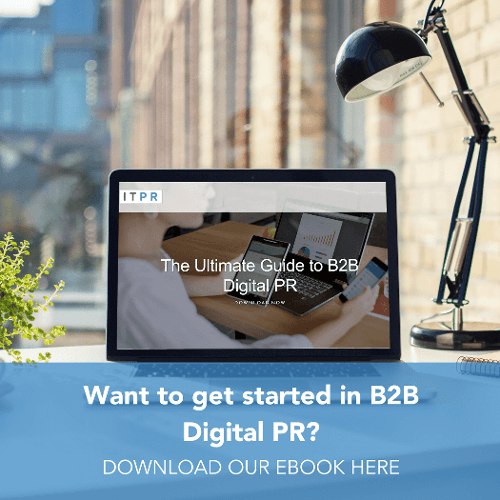Congrats! You’ve just secured a piece of coverage – some earned media and third-party endorsement in a top tier publication. But the good times don’t have to end there.
By tying in earned coverage with your owned media (company blogs, social accounts or websites) and paid media campaigns (any kind of paid advertising that you do), you can promote and amplify that single piece of coverage to further raise brand awareness, hit more prospects and get the most out of your marketing budget. Here’s how.
Modern PR
The problem with traditional PR is that as soon as a piece of coverage appears, it’s logged on a reporting schedule and filed away. This is mainly because traditional metrics are based on the number of articles placed, or publication readership figures.
Plus, in the old days, there really was no other way of highlighting coverage you had worked to place, other than shoving the printed article under the nose of everyone who passed you by.
But digital channels have changed the way PR is measured and how success is shared, with a wider emphasis placed on marketing and SEO, such as driving traffic to company websites, generating leads and helping improve page rankings.
So, although PR was traditionally seen as separate from marketing and SEO departments, the three can all be used to help amplify a piece of coverage beyond its original audience.
Owning It
In short, gaining coverage through PR is an example of earned media, i.e. something that wasn’t paid for to place in the publication. But that doesn’t mean it can’t be used as part of your owned and paid media strategies as well.
In terms of owned media, pieces of coverage can be shared on your company website in a new blog. This can have several benefits, such as helping drive website traffic, gain leads, and improve SEO and page ranking – not to mention promoting that you’ve been mentioned on an authoritative trade or news magazine.
For example, publishing links to coverage from a company blog that discusses the topic further allows you to optimise the page for Google and use this credibility to make your brand more ‘findable’. This can also be distributed through company and employee social media channels to help further share the coverage and link back to your website.
Is it time to pay?
With paid media, advertising campaigns can also help promote coverage to a wider audience.
For example, you could consider creating a sponsored post on LinkedIn which links to the coverage. The benefit of this is that you can specifically target a group of people that the coverage may not have initially reached, but who you think might be interested in reading it, such as an article on GDPR aimed at marketing managers and CEOs at advertising companies.
Even if you’ve already earned your coverage and amplified it through your owned media channels, it’s always useful to explore paid options to see if there might be even more value that can be squeezed from the coverage.
Covering all bases
With many traditional PR agencies, the benefits stop at the piece of coverage.
But modern PR strategies can help get the most of your PR efforts, using owned and paid media channels to reach new audiences and more prospects.
Modern PR campaigns and content strategies need to not just think about getting coverage, but how they can tie their earned, owned and paid media channels together to amplify coverage and get the most out of your content.
If you’re looking to develop your SEO and PR work, you can find out more about our B2B content creation or B2B technology PR consultancy services or get in touch with one of our team.





.png?width=60&name=twitter-logo%20(1).png)
